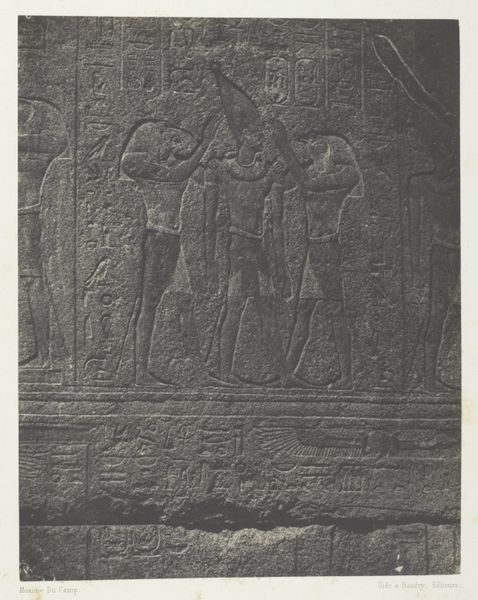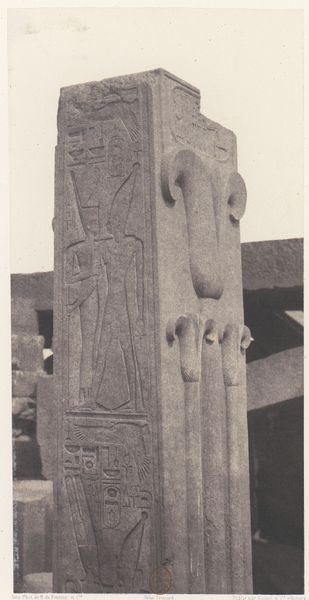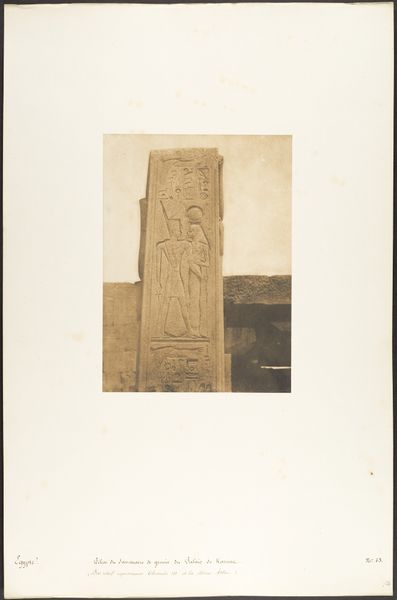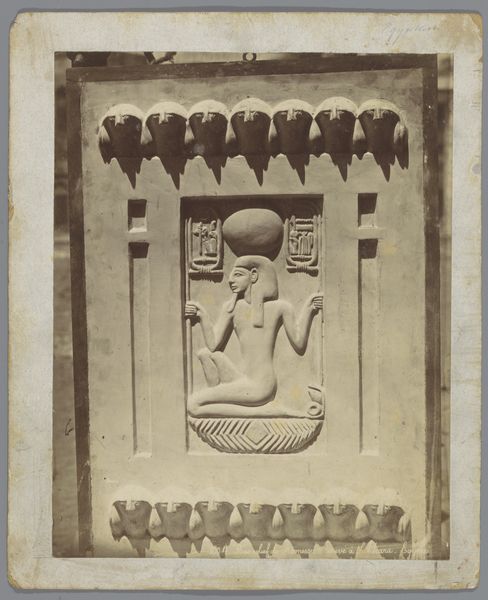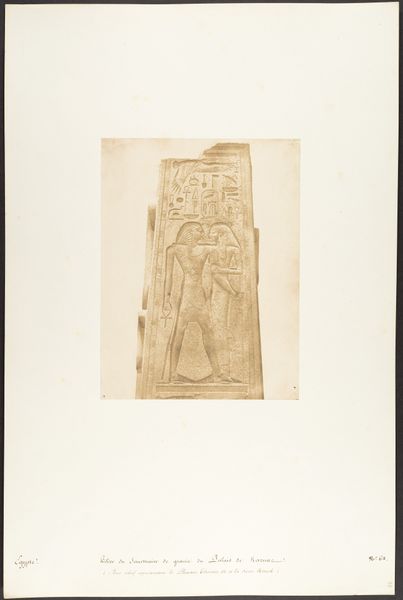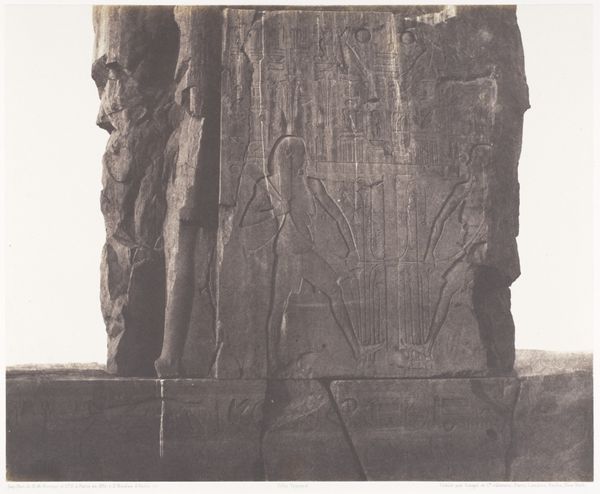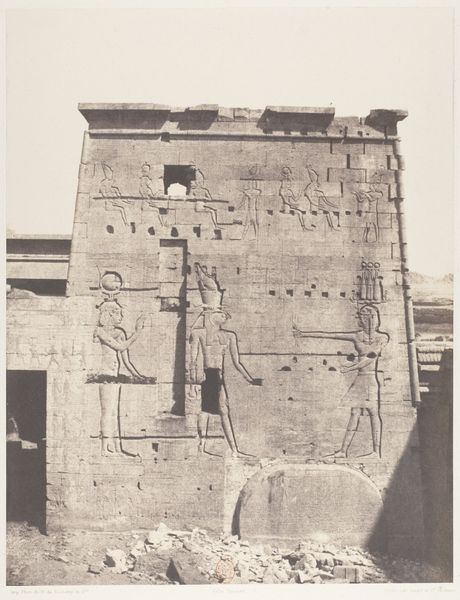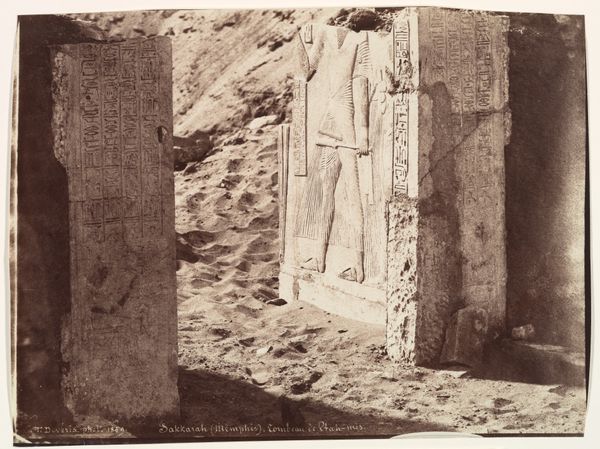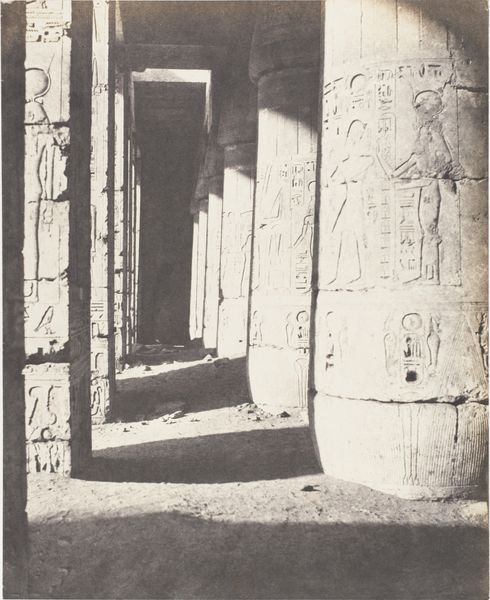
Palais de Karnak, Pilier Devant le Sanctuaire de Granit; Thèbes Possibly 1849 - 1852
0:00
0:00
print, etching, paper, photography
#
16_19th-century
#
muted colour palette
#
ink paper printed
# print
#
etching
#
war
#
landscape
#
ancient-egyptian-art
#
paper
#
photography
#
egypt
#
carved into stone
#
ancient-mediterranean
#
france
#
history-painting
Dimensions: 20.3 × 16 cm (image/paper); 30 × 42.8 cm (album page)
Copyright: Public Domain
Curator: This striking print, possibly dating from 1849 to 1852, captures a scene at the Palais de Karnak in Thebes. Maxime Du Camp, the French photographer and writer, is the artist behind it. Editor: My first impression is a sense of profound age and silent grandeur. It’s like a ghostly echo from a civilization long past, whispering secrets in a language I can't quite decipher. Curator: Indeed. The formal arrangement emphasizes the sheer monumentality of the ancient Egyptian pillar. The precise etching technique allows for a clear delineation of the hieroglyphs and the figures carved into the stone. Note the controlled gradation of tones creating an impressive range, considering the monochromatic palette. Editor: It's incredible to think about the hands that carved those figures, the stories they represent! They’re almost frozen in time, these figures on the pillar, eternally facing each other across millennia, yet caught in the single, silent gaze of Du Camp's camera. What kind of conversation do you think they're having? Curator: From a formalist perspective, I’m less concerned with the narrative and more interested in the composition, the way the lines create visual weight and balance, how the play of light emphasizes the relief carving. The photo becomes a study of form. Editor: But doesn’t the context add to that form? Knowing that Du Camp was traveling in Egypt at a time when photography was still in its infancy, venturing into these ancient spaces, imbues the print with another layer. It's more than just shapes; it's history, exploration. There’s a bravery in simply capturing this. It speaks to me in a really primal way. Curator: Certainly. Context informs interpretation, and a semiotic reading would undoubtedly reveal a wealth of information about ancient Egyptian beliefs and social structures encoded in the artwork’s iconography. I simply feel the emphasis should be placed on its aesthetic structure first and foremost. Editor: Well, for me, it's about that emotional jolt. This image resonates like a forgotten memory unearthed from the sands. It connects me not only to ancient Egypt, but to Du Camp’s moment of wonder. Curator: A compelling connection, undoubtedly. I appreciate how it reflects on the timeless impact of enduring human achievements. Editor: And I like your focus on the solid way light hits that carved stone; there's such power held inside.
Comments
No comments
Be the first to comment and join the conversation on the ultimate creative platform.

